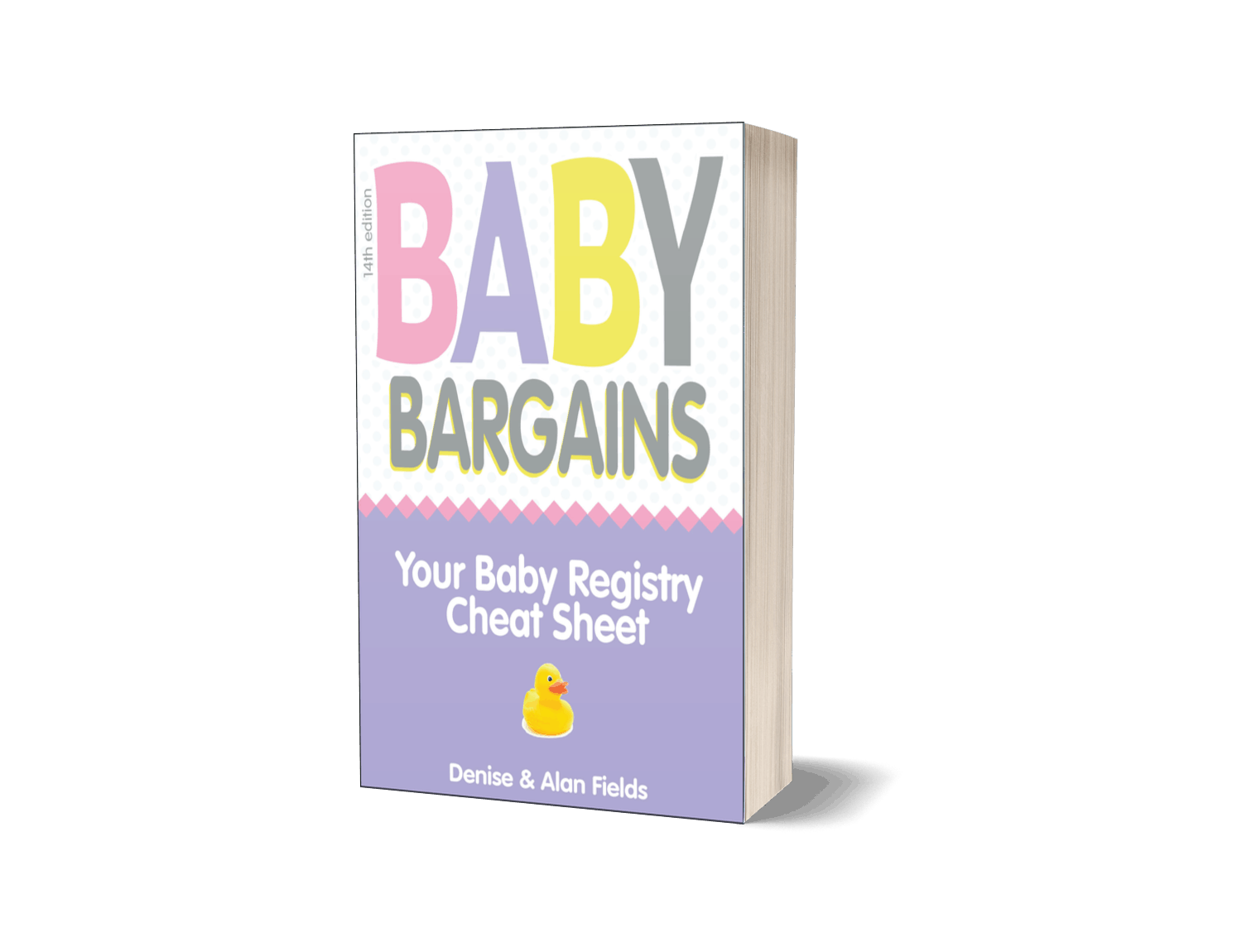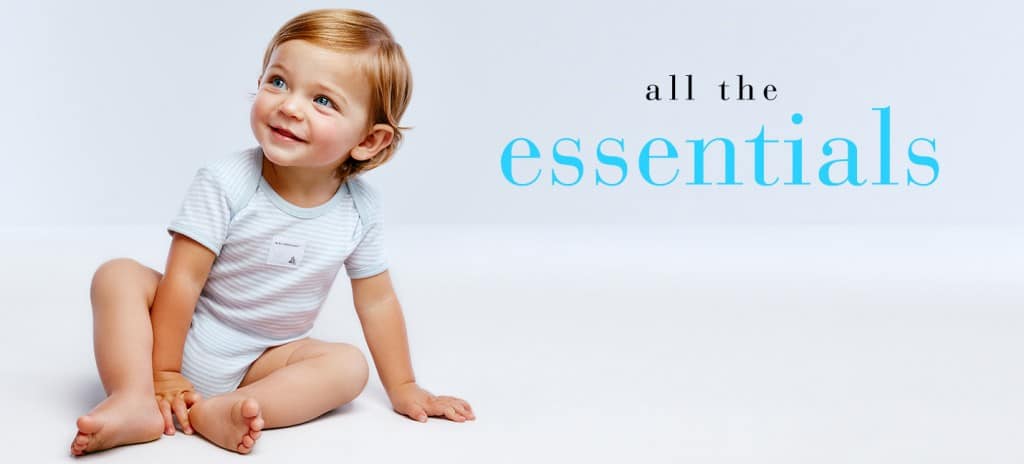
The Best Baby Clothes 2025
Best Baby Clothes 2025
Last Updated: . The Best Baby Clothes 2025. Ok, you need some baby clothes. But what? And how many?
If you’ve never had kids, you may not realize all the different variables when it comes to buying baby clothes. An outfit that’s perfect for day care (that is, to be trashed in Junior’s first painting experiment) is different from an outfit for a weekend outing with friends. And dress-up occasions may require an entirely different set of clothing criteria.
Hence, we’ve divided our clothing brand recommendations into three areas: good (day care), better (weekend wear) and best (special occasions). While some brands make items in two or even three categories, here’s our top picks:
Day Care & Play. For everyday comfort (and day-care situations), Carter’s, Little Me, and OshKosh make the best baby clothes. We also like the basics (when on sale) at Baby Gap (Gap Kids) for day-care wardrobes. For great price to value, take a look at Old Navy and Target.
Weekend Outings. What if you have a miniature golf outing planned with friends? Or a visit to Grandma’s house? The brands of better-made casual wear we like best include Baby Gap, Tea Collection, and Mud Pie. Also recommended: MulberriBush, and Wes and Willy. For online sites, we like the clothes in Hanna Andersson and Boden’s All Baby as good brands, especially on sale.
Special Occasion. Yes, holidays and other special occasions call for special outfits. We like Janie and Jack, and Wooden Soldier.
The Best Baby Clothes
7 Things No One Tells You About Buying Baby Clothes!
1. Ignore baby stores’ recommended lists.
Surprise, many stores load up their recommended baby clothes lists with unnecessary items (baby kimono, anyone?). See our “Baby Bargains” Layette for more.
2. Sizing–yeah, it’s confusing.
Most baby clothes come in a range of sizes rather than one specific size (“newborn to 3 months” or “3-6 months”). For first time parents buying for a newborn, we recommend you buy “3-6 month” sizes (instead of newborn sizes). Why? Because the average newborn will grow out of “newborn” sizes way too fast. The exception to this rule: preemies and multiples, who tend to be on the small side.
No matter how big or small your newborn, a smart piece of advice: keep all receipts and tags so you can exchange clothes for larger sizes—you may find you’re into six-month sizes by the time your baby hits one month old! (Along the same lines, don’t wash all those new baby clothes immediately. Wash just a few items for the initial few weeks. Keep all the other items in their original packaging to make returns easier).
3. Your baby will outgrow clothes much faster than you think!
Babies double their birth weight by five months . . . and triple it by one year! On average, babies grow ten inches in their first year of life. Given those facts, you can understand why we don’t recommend stocking up on “newborn” size clothes.
Also: remember, you can always buy more later if you need them. In fact, this is a good way to make use of those close friends and relatives who stop by and offer to “help” right after you’ve suffered through 36 hours of hard labor—send them to the store! FYI: our supply list should last for the first month or two of your baby’s life.
4. Your baby’s development factors into clothing
If you’re new to this baby thing, you may be wondering how to pair the right clothing with your baby’s developmental stage (if you’re back for another round, think of this as a refresher). Here’s a little primer on ages and stages.
◆ 0-3 months: Newborns aren’t even lifting their heads and they aren’t able to do much besides eat, sleep and poop. Stick with sleepers, wearable blankets, and nightgowns for these guys. They don’t need overalls or shirts and pants. Look for items sized by weight if possible since 0-3 month sizes can be all over the board.
◆ 3-6 months: By the end of this stage your little one will be rolling over, sitting up and sleeping somewhat less. Still need those sleepers, but you’re probably going to expand the wardrobe to include a few more play clothes. Two new items you will need now: bibs and socks. Depending on your baby’s growth, you may find that you’re buying nine and 12-month sizes.
◆ 6-12 months: Finally, your baby is crawling, standing, maybe even cruising. At the end of a year she’s likely tried those first tentative steps! Play clothes are a layette mainstay during these months. You’ll also need good, no-skid socks that stay on. You may find you’re buying into the 18-month sizes.
5. You’re going to spend quality time with your washer.
You may wonder, if you follow our list, how much laundry will you do? The answer: there is no answer. Factors such as whether you use cloth or disposable diapers (cloth can leak more; hence more laundry) and how much your baby spits up will greatly determine the laundry load.
Another factor: breast versus bottle-feeding. Bottle-fed babies have fewer poops (and hence, less laundry from possible leaks). An “average” laundry cycle with our layette list would be every two to three days, assuming breast feeding, disposable diapers and an average amount of spit-up. Hint: if your washing machine is on its last legs, this might be something to upgrade before baby arrives.
6. Second-hand baby clothes = big savings.
Especially when you’re talking about infant clothing. After all, infants don’t do much damage to their clothes. They aren’t playing in puddles, sucking down OtterPops or finger painting yet. So you can bet the wear and tear on used infant clothing is minimal.
Yes, there are national resale chains that specialize in kids clothes—Once Upon a Child is a reader favorite. But a quick Google search should uncover local stores.
Safety tip: make sure any second-hand clothes you buy don’t have hazards like drawstrings or easy-to-detach buttons or bows.
7. One size does not fit all.
A six month-size t-shirt is a six- month-size t-shirt, right? Wrong.
For some reason, baby clothing companies have yet to synchronize their watches when it comes to sizes. Hence, a clothing item that says “six-month size” from one manufacturer can be just the same dimensions as a “twelve-month size” from another.
All this begs the question: how can you avoid widespread confusion? First, open packages to check out actual dimensions. Take your baby along and hold items up to her to gauge whether they’d fit. Second, note whether items are pre-shrunk—you’ll probably have to ask (if not, allow for shrinkage). Third, don’t key on length from head to foot. Instead, focus on the length from neck to crotch—a common problem is items that seem roomy but are too tight in the crotch.
Finally, forget age ranges and pay more attention to labels that specify an infant’s size in weight and height, which are much more accurate. To show how widely sizing can vary, check out the following chart. We compared “six-month” t-shirts from six major clothing makers (sold at chain stores and Amazon.com) plus two popular web sites, Hanna Andersson, and Baby Gap. Here’s what these six-month t-shirts really translated to in terms of a baby’s weight and height:
Here’s another secret from the baby clothing trade: the more expensive the brand, the more roomy the clothes. Conversely, cheap items usually have the skimpiest sizing. What about the old wives’ tale that you should just double your baby’s age to find the right size (that is, buying twelve-month clothes for a six- month old?). That’s bogus—as you can see, sizing is so all over the board that this rule just doesn’t work.
The “Baby Bargains” Layette
Let’s talk quality when it comes to baby clothes.
First, you want clothing that doesn’t shrink. Look at the washing instructions. “Cold water wash/low dryer setting” is your clue that this item has NOT been pre-shrunk. Also, do the instructions tell you to wash with “like colors?” This may be a clue that the color will run. Next check the detailing. Are the seams sewn straight? Are they reinforced, particularly on the diaper area?
Go online and check message boards for posts on different brands. On our boards (Babybargains.com), parents comment frequently on whether a brand shrinks, has plenty of diaper room, falls apart after a few washings, etc. Spend a little time online to get some intel on the best brands—and which ones to avoid.
Now, let’s get to the list:
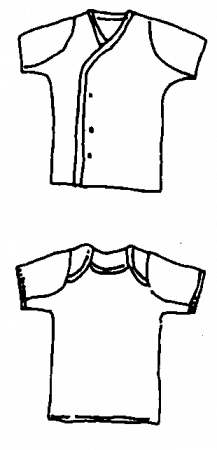
By the way, is a t-shirt an outfit or an undergarment? Answer: it’s both. In the summer, you’ll find Onesies with printed pat- terns that are intended as outfits. In the winter, most stores just sell white or pastel Onesies, intended as undergarments.
How many? T-shirts usually come in packs of three. Our recommendation is to buy two packages of three (or a total of six shirts) of the side-snap variety. We also suggest buying two packs of over-the-head t-shirts. This way, if your baby does have an allergy to the snaps, you have a backup. Later you’ll find the snap-at-the-crotch t-shirts to be most convenient since they don’t ride up under clothes.
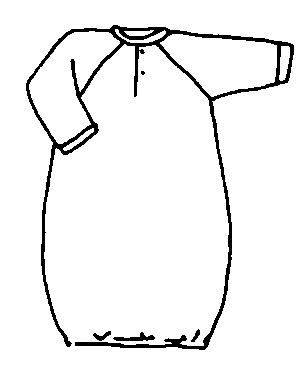
How many? This is a toss-up. If you want to experiment, go for one or two of these items. If they work well, you can always go back and get more later.
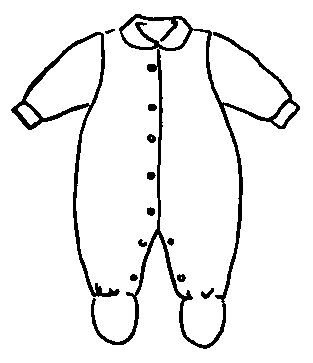
One parent emailed us asking if she was supposed to dress her baby in pants, shirts, etc. or if it was OK to keep her daughter in sleepers all day long. She noted the baby was quite comfortable and happy. Of course, you can use sleepers exclusively for the first few months. We certainly did. As we’ve said all along, a comfortable baby is a happy parent!
How many? Because of their heavy use, we recommend parents buy at least four to eight sleepers.
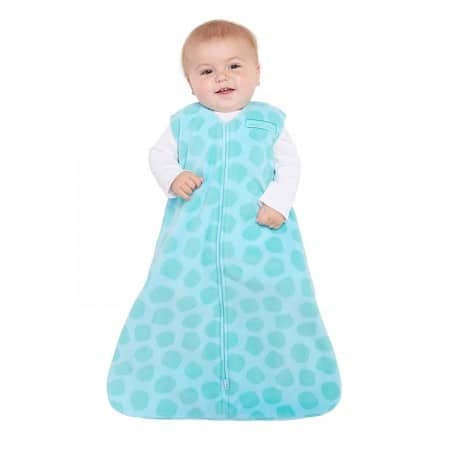
How many? If you live in a cold climate or your baby is born in the winter, you may want to purchase two to four of these items. As an alternative to buying blanket sleepers, you could put a t-shirt on underneath a sleeper or stretchie for extra warmth.
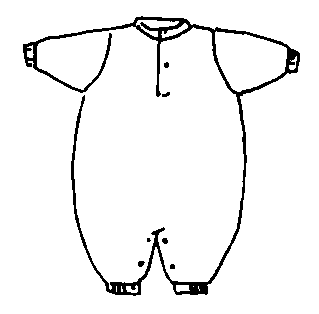
How many? Since these are really play clothes and small infants don’t do a lot of playing, we recommend you only buy two to four coveralls for babies less than four months of age. However, if your child will be going into daycare at an early age, you may need to start with four to six coveralls.
◆ Booties/socks. These are necessary for outfits that don’t have feet (like gowns and coveralls). As your child gets older (at about six months), look for the kind of socks that have rubber skids on the bottom (they keep baby from slipping when learning to walk).
How many? Three to four pairs are all you’ll need at first, since baby will probably be dressed in footed sleepers most of the time.
◆ Sweaters. How many? Most parents will find one sweater is plenty (they’re nice for holiday picture sessions). Avoid all- white sweaters for obvious reasons!
◆ Hats. Believe it or not, you’ll still want a light cap for your baby in the early months of life, even if you live in a hot climate. Babies lose a large amount of heat from their heads, so protecting them with a cap or bonnet is a good idea. And don’t expect to go out for a walk in the park without the baby’s sun hat either.
How many? A couple of hats would be a good idea—sun hats in summer, warmer caps for winter. We like the safari-style hats best (they have flaps to protect the ears and neck).
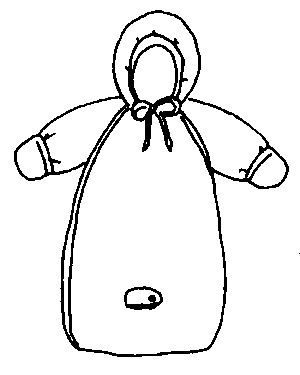
FYI: Snowsuits and buntings should NOT be worn by infants when they ride in a car seat. Why? Thick fabric on these items can compress in an accident, compromising the infant’s safety in the seat. So how can you keep your baby warm in an infant car seat? There are car seat covers that fit over the top of the car seat to keep baby warm. Cozy Cover (Cozy-Cover.com, $20), makes a variety of styles and fabrics to protect your child from the cold or the sun.
How many? Only buy one of these if you live in a climate where you need it. Even with a Colorado winter, we got away with layering clothes on our baby, then wrapping him in a blanket for the walk out to a warmed-up car. If you live in a city without a car, you might need two or three snow- suits for those stroller rides to the market.
◆ Kimonos. Just like the adult version. Some are zippered sacks with a hood and terry-cloth lining. You use them after a bath.
How many? None. We recommend you pass on the kimonos and instead invest in good quality towels.
◆ Saque Sets. Two-piece outfits with a shirt and diaper cover.
How many? Forget buying these as well.

How many? Skip the drool bibs. The exception: if your baby really can’t keep dry because he’s drooling the equivalent of a bathtub full every day, consider buying a few of these. When baby starts eating solid foods, you’ll need at least three or four large bibs. One option: plastic bibs for feeding so you can just sponge them off after a meal.
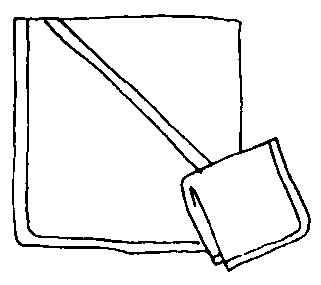
How many? At first, you’ll probably need only three sets of towels and washcloths (you get one of each per set). But as baby gets older and dirtier, invest in a few more washcloths to spot clean during the day.
◆ Receiving Blankets. You’ll need these small, cotton blankets for all kinds of uses: to swaddle the baby, as a play quilt, or even for an extra layer of warmth on a cold day.
How many? We believe you can never have too many of these blankets, but since you’ll probably get a few as gifts, you’ll only need to buy two or three yourself. A total of seven to eight is probably optimal.
Garage & Yard Sales: Nine Tips
It’s an American bargain institution—the garage sale. Sure you can save money on baby clothes online or get a deal at a department store sale. But there’s no comparing to the steals you can get at your neighbor’s garage sale.
We love getting email from readers who’ve found great deals at garage sales. How about 25¢ Onesies, a snowsuit for $1, barely used high chairs for $5? But getting the most out of garage sales requires some pre-planning. Here are the insider tips from our readers:
1 CHECK CRAIGSLIST FIRST. Many folks advertise their garage sales a few days before the event—zero in on the ads/posts that mention kids/baby items to keep from wasting time on sales that won’t be fruitful.
2 BECOME A GPS NINJA. Plot your route to avoid doubling back, factoring in travel time.
3 START EARLY. The professional bargain hunters get going at the crack of dawn. If you wait until mid-day, all the good stuff will be gone. An even better bet: if you know the family, ask if you can drop by the day before the sale. That way you have a first shot before the competition arrives. One trick: if it’s a neighbor, offer to help set-up for the sale. That’s a great way to get those “early bird” deals.
4 DO THE “BOX DIVE.” Many garage sale hosts will just dump kids clothes into a big box, all jumbled together in different sizes, styles, etc. Figuring out how to get the best picks while three other moms are digging through the same box is a challenge. The best advice: familiarize yourself with the better name brands in this chapter and pluck out the best bets as fast as possible. Then evaluate the clothes away from the melee.
5 CONCENTRATE ON “FAMILY AREAS.” A mom here in Colorado told us she found garage sales in Boulder (a college town) were mostly students getting rid of stereos, clothes and other junk (sadly, a used beer pong table isn’t useful in a nursery). A better bet was nearby Louisville, a suburban bedroom community with lots of growing families.
6 HAGGLE. Prices on big-ticket items (that is, anything over $5) are usually negotiable. Another great tip we read in the newsletter Cheapskate Monthly: to test out products, carry a few “C” and “D” batteries with you to garage sales. Why? Some swings, bouncers and other gear use such batteries. Pop in your test batteries to make sure items are in good working order!
7 SMALL BILLS. Take small bills with you to sales—lots of $1’s and a few $5’s. Why? When negotiating over price, slowly counting out small bills makes the seller feel like they are getting more money. A wad of 20 $1’s for a high chair feels like a more substantial offer than a $20 bill.
8 DON’T BUY A USED CRIB OR CAR SEAT. Old cribs may not meet current safety standards. It’s also difficult to get replacement parts for obscure brands. Car seats are also a second-hand no-no— you can’t be sure it wasn’t in an accident, weakening its safety and effectiveness. And watch out for clothing with drawstrings, loose buttons or other safety hazards.
9 BE CREATIVE. See a great stroller but the fabric is dirty? And non- removable so you can’t throw it in the washing machine? Take a cue from one dad we interviewed. H
Baby Clothes to Avoid
◆ Clothing that Leads to Diaper Changing Gymnastics. It’s pretty obvious that some designers of baby clothing have never had children of their own. What else could explain outfits that snap up the back, have super tiny head, leg and arm openings, and snaps in inconvenient places (or worse, no snaps at all)? One mother we spoke with was furious about outfits that have snaps only down one leg, requiring her baby to be a contortionist to get into and out of the outfit.
Our advice: stay away from outfits that don’t have easy access to the diaper. Look instead for snaps or zippers down the front of the outfit or on the crotch. If your baby doesn’t like having things pulled over his head, look for shirts with wide, stretchy necklines.
◆ Shoes for newborns. Developmentally, babies don’t need shoes until after they become quite proficient at walking (around 11 to 14 months). In fact, it’s better for their muscle development to go barefoot or wear socks. While those expensive baby Merrells or Air Jordans might look cute, they’re really a waste of money—and counterproductive.
Once your baby (now a toddler) masters walking, then you need shoes. Here’s our thoughts.
First, look for shoes that have the most flexible soles. You’ll also want fabrics that breath and stretch, like canvas and leather— stay away from vinyl shoes. The best brands we found were recommended by readers. Robeez (a division of Stride Rite, pictured) are made of leather, have soft, skid-resistant soles and are machine washable. They start at $24 for a basic pair.
Another reader recommended PediPeds. The soft-soled shoes are hand stitched and made of leather. They are sized from 0 to five years and start at $35.
◆ Drool bibs. These tiny bibs are intended for small infants who drool all over everything. Or infants who spit-up frequently. Our opinion: they’re pretty useless—they’re too small to catch much drool or spit-up.
When you do buy bibs, stay away from the ones that tie. Bibs that snap or have Velcro are much easier to get on and off. Another good bet: bibs that go on over the head (and have no snaps or Velcro). Why? Older babies can’t pull them off by themselves.
Stay away from the super-size vinyl bibs that cover the arms, since babies who wear them can get too hot and sweaty. However, we do recommend you buy a few regular-style vinyl bibs for travel. You can wash them off much more easily than the standard terry-cloth bibs.
◆ A toss-up: gowns. The jury is still out on whether gowns are useful. We thought they were a waste of money, but a parent we interviewed did mention that she used the gowns when her baby had colic (that persistent crying condition; see our other book Baby 411 for a discussion). She believed that the extra room in the gown made her baby more comfortable. Still others praise gowns for their easy access to diapers, making changes easy, especially in the middle of the night.
Finally, parents in hot climates say gowns keep their infants more comfortable. So, you can see there’s a wide range of opinions on this item.
The Best Baby Clothes Brands
Walk into any store and you’ll see a blizzard of brand names for baby clothes. Which ones stand up to frequent washings? Which ones have snaps that stay snapped? Which are a good value for the dollar? We asked our readers to divide their favorite clothing brands/stores into three categories: best bets, good but not great and skip it.
The Best Bets tend to be clothes that were not only stylish but also held up in the wash. The fabric was usually softer and pilled less. Customer service also comes into play with the best brands. Hanna Andersson is a great example of a company that bends over backwards for their customers. Gymboree, on the other hand, seems to be less satisfactory for many parents, souring them on the brand. Keep in mind, some brands are pricey, so look for sales and second hand deals. Or just point Grandma to these sites!
Good but not Great clothes were pretty good, just not as soft or as stylish as Best Bets. The Skip-It brands were most likely the poorest quality: they shrunk in the wash, pilled up or fell apart. Inconsistent sizing was also a problem.
Some of these brands sell direct; others just through retailers.
Best Bets
- Baby Gap
- Baby Lulu
- Carter’s
- Cozy Toes
- First Impressions
- Flap Happy
- H & M
- Hanna Andersson
- Janie and Jack
- Little Me
- Boden
- Old Navy
- OshKosh B’Gosh
- Sarah’s Prints
- Tea Collection
- Wes & Willy
- Zutano
Good But Not Great
- Children’s Place
- Good Lad of Philadelphia
- Le Top
- Target (Halo, Circo)
- Walmart (Faded Glory, Carter’s Child of Mine)
Skip It
- Gerber
- Hane’s
- Disney
- Carter’s Just One Year (Target)
- George (Walmart)
Why Trust Us
We’ve been rating and reviewing baby layette clothing since 1994. In addition to hands on inspections of clothing items, we have also visited shops all over the country and met with safety regulators—and when we travel, we pay our all of our own expenses. We look to our reader feedback to give us a real world perspective on car seats—our message board on clothing has 22,000 (!) threads. We also evaluate consumer reviews posted on sites like Amazon.
Here’s another key point: we don’t take money from the brands we review. No free samples, no sponsors, no “partnerships.” Baby Bargains is your independent and unbiased source for expert baby gear reviews. We’ve been writing and reviewing baby gear since 1994. Yes, that long!
Learn more about our work and how to support our site.
How we picked a winner
We evaluated infant and toddler clothing with hands on inspections, checking items for comfort and quality. We also gather significant reader feedback, tracking clothes for durability.
We’ve been rating and reviewing apparel since 1994. We have personally laundry tested clothes and compare our reader feedback with our own results.
The Best Baby Clothes

BabyBargains.com is a participant in the Amazon Services LLC Associates Program, an affiliate advertising program designed to provide a means for sites to earn advertising fees by advertising and linking to Amazon.com and its related sites. As an Amazon Associate, I earn from qualifying purchases.

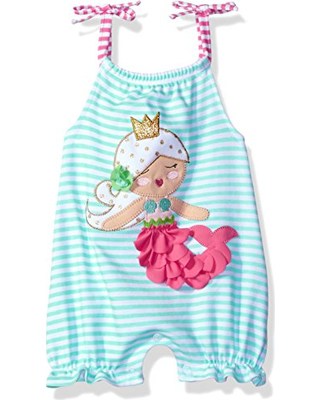







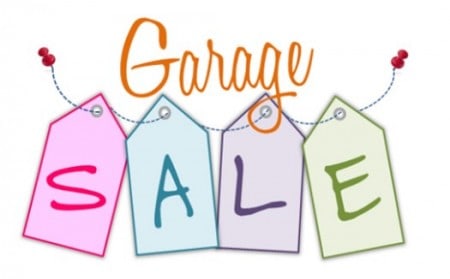
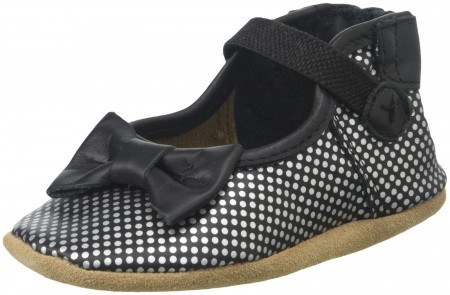
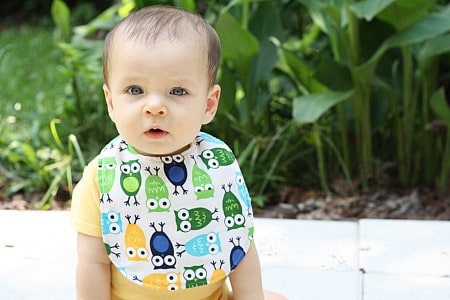
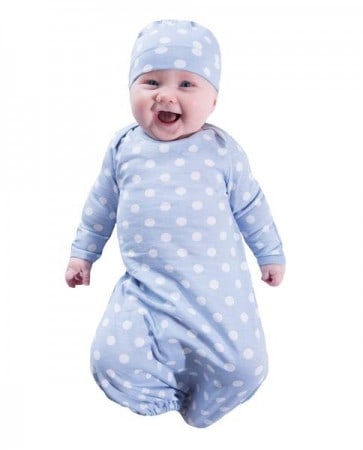
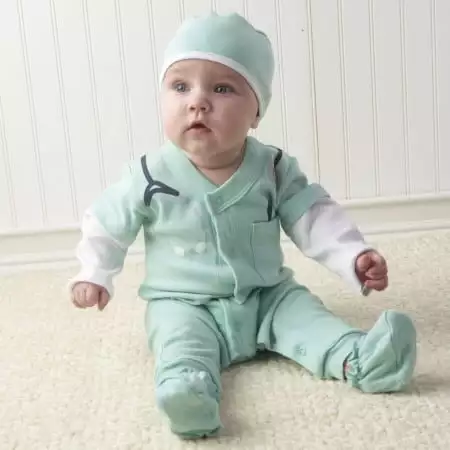
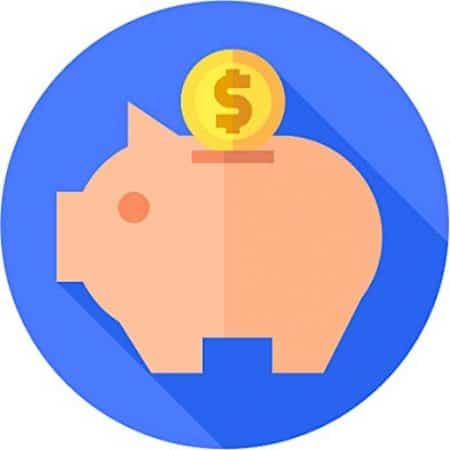 We obsess over gear for families and the home . . . so you don’t have to. Baby Bargains has one mission: help you find the best gear for your family with unbiased reviews by experts with 20 years of experience. At prices that don’t break the bank. When you purchase a product from links on this site, we make a small affiliate commission. Learn more
We obsess over gear for families and the home . . . so you don’t have to. Baby Bargains has one mission: help you find the best gear for your family with unbiased reviews by experts with 20 years of experience. At prices that don’t break the bank. When you purchase a product from links on this site, we make a small affiliate commission. Learn more 
